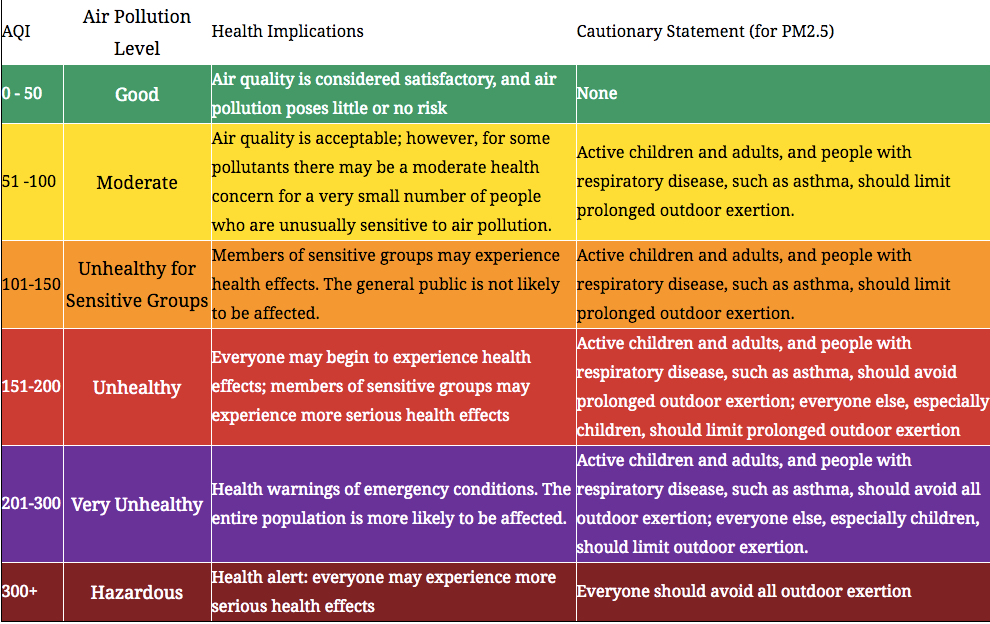A Guide to Air Pollution: PM2.5 Levels, Air Purifiers & More
Last year

AQI or Air Quality Index which measures the amount of particulate matter in the air was recorded at 433 in Delhi classified in the “Hazardous” zone. PM2.5 are particulate matter, so small that our body cannot filter them out naturally. These particles lodge themselves inside our lungs acting as carcinogens and can cause serious health implications.
Many other cities in the world, are suffering the same fate without getting an equal amount of attention from the media. A larger change can only be brought about when both the government and citizens own up to their actions and act more responsibly. However, in the meantime, if you are in a city that is affected, now is the time to invest in an air purifier and an N99 face mask. Here’s a guide to help you through that decision.
Find Out How Polluted Your City Is
1. The World Air Quality Index project is a social enterprise project that provides a unified Air Quality information for the whole world. You can find your city’s pollution level there as well.
2. Accuweather app gives AQI for selected cities along with customised weather forecasts. For instance, if you have allergies, asthma, migraine, the app will tell you if the weather is beneficial for you that day.
If the AQI of your city is over 100, you are breathing air that can cause serious health issues. Here’s a chart to find out whether the air in your city is clean.

Needless to say that indoor air is as affected by pollution as outdoor air. Infact indoor air is sometimes worsened by allergens, pet dander, construction dust etc which act as carriers of particulate matter.
The effects of inhaling particulate matter that have been widely studied in humans and animals include asthma, lung cancer, respiratory diseases, cardiovascular disease, premature delivery, birth defects, low birth weight.
Who Needs An Air Purifier
1. People living in cities with an AQI > 100 ppm
Even if you have no history of respiratory diseases, it is important to exercise precaution if pollution levels in your city are unhealthy. Choose air purifiers that have a HEPA filter that removes particulate matter like PM 2.5 and PM 10 which can settle in the bronchi and lungs and cause health problems.
2. People with Asthma & Respiratory diseases
Air pollution exacerbates asthma. People suffering from asthma are advised by doctors, to not only limit physical activity outdoors, but have an air purifier running in the room as often as possible. Air purifiers filter out irritants like pollen, dust, mould, toxic gases and particulate matter which worsen conditions of asthma.
3. People with Pets
As such, pet dander is not harmful to human beings. But allergens like pollen, mould spores, dust mites attach themselves to the pet dander and cause allergies. Air Purifiers with Pre-Filters significantly reduce the amount of these allergens in your house.
4. Moms and Babies
If you plan on starting or expanding a family, you may need to be careful with the air you breathe. Multiple studies have determined air pollution contributes to lower fertility rates in men and women. In a study by The Stockholm Environment Institute (SEI) nearly three million babies are born prematurely each year because of air pollution.
How To Choose An Air Purifier: Specs & Fine Print
There are tens of air purifiers out there selling some different or the other. The specs may seem daunting and confusing with every company positioning their products as the best, but its important to consider the fine print, because lets face it, air purifier don’t come cheap.
Why are air purifiers expensive?
The starting price for any decent purifier is Rs 10,000. The HEPA filter which traps the micro particles like PM2.5 is the reason for this steep pricing. Air purifier without a HEPA filter is as good as an air conditioner – not worth it.
So here are the 5 most important things you need to consider in an air purifier
1. Filters : Pre-Filter, Carbon Filter & HEPA
HEPA or High efficiency particulate air (HEPA), originally called high-efficiency particulate absorber is the most important part of an air purifier. HEPA filters out the smallest of pollution particles like PM2.5 and 10 which cause the most damage in the human body as they are not naturally filtered out by the nose. Note however, a HEPA filter in isolation does not last very long. It should be accompanied by a minimum of a pre-filter so that load of filtering out big particles like dust and dander is not on the HEPA. Choose a purifier that has at least 2 filters to support the HEPA
2. CADR or Clean Air Delivery Rate
The higher the CADR, the better. At minimum it should be 100. CADR determines the rate at which air is cleaned inside the room. With a high CADR purifier, more air in your room will be cleaner at a point of time.
3. Ionizer – Good or Bad?
Many air purifier companies emphasize the benefits of an ionizer, crediting it with ‘mood lifting’ air. However, ionizers come with a byproduct, ozone. Ozone proves to be harmful especially for those with asthma. Some companies will not disclose clearly whether or not they have ozone. Do not settle for lack of information, and email the company if you are unsure of whether or not their product releases ozone. Definitely do not go for an air purifier that does not categorically mention ‘No Ozone’.
4. Noise
Ones less than 50 db should be fine to use at night when you sleep.
5. Filter Change Indicator
Without an indicator, it is hard to determine when the filter needs a change or cleaning. Choose one that comes with an indicator preferably.
